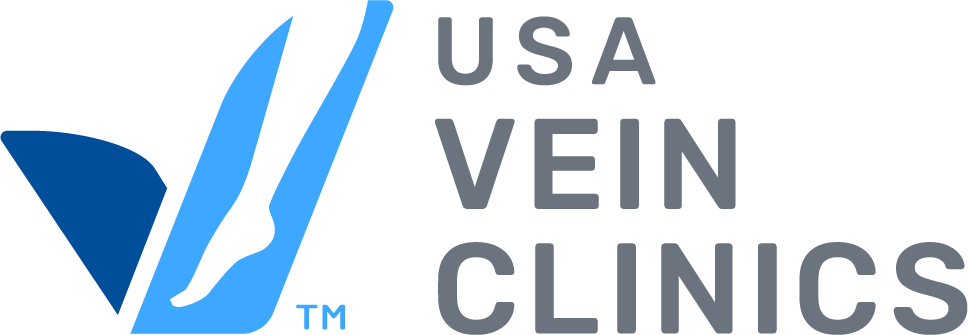
Have you met your health insurance deductible this year? Most insurance plans reset their deductibles on Jan. 1, and if you haven’t met your deductible, you’re paying more than you could be.
The last month of the year is busy, so it may be difficult to prioritize your health and make appointments. However, for conditions like varicose veins, delaying treatment can worsen symptoms, leading to non-healing leg wounds and dangerous blood clots.
USA Vein Clinics offer various, FDA-approved varicose vein treatments. Our vein treatments are covered by most major insurance plans, including Medicare and some Medicaid plans. You can also go home shortly after the procedure and expect a quick recovery. If your insurance can’t cover your treatment, CareCredit® can cover the costs and set up an affordable repayment plan.
If you’re unsure whether your insurance will cover treatment, USA Vein Clinics’ online scheduling tool can verify your insurance. You can also call their customer service line to help verify costs.
What is a Health Insurance Deductible?
A health insurance deductible is the amount you are responsible for before your insurance starts sharing some costs. Deductibles can vary depending on the kind of coverage you have. Those who pay a lower monthly fee will have a higher deductible than those who pay a higher monthly fee.
How do Health Insurance Deductibles Work?
Let’s say you have a health insurance plan with a $100 deductible. Let’s also imagine you’re dealing with painful varicose veins that affect daily tasks like climbing stairs. You had an initial screening for your varicose veins and the vein specialist suggested getting Endovenous Laser Treatment (EVLT). Hypothetically, without insurance, the procedure’s cost could be $500. However, with your health insurance deductible, you are only responsible for covering $100 and your insurance will cover the rest. This is because most insurance providers see EVLT as an essential health service.
The Benefits of Meeting Your Health Insurance Deductible Before the End of the Year
Once you meet your deductible for the year, insurance will start contributing to your healthcare costs. Your insurance’s contribution will vary depending on the kind of insurance you have. Some insurance requires a copay which is a fixed price you pay for certain visits. An example would be paying $50 for a vein clinic visit.
Other insurances require you to pay a percentage of costs rather than a fixed rate, known as coinsurance. Coinsurance rates for vein treatments will be about 20 percent, so a vein treatment that costs $3,000 would only cost you $600 out-of-pocket.
It may take more than one treatment session to get the best results from varicose vein procedures. If you met your deductible after your first treatment session, your next treatment would only need a copay or coinsurance.
What Medical Expenses Count Toward Deductibles?
Your health insurance will generally cover the following medical expenses and count out-of-pocket costs toward your deductible:
- Doctor and therapist visits
- Hospitalizations
- Prescriptions
- Necessary surgeries or procedures
- Lab tests (CAT scans, MRIs, and ultrasounds)
- Anesthesia
- Medical devices (pacemakers or blood sugar monitors)
- Medical equipment (wheelchairs or compression socks)
Not all health insurance will cover the same medical expenses. You can find out whether insurance will cover your treatment by looking at your provider’s explanation of benefits. USA Vein Clinics can also verify your insurance via their online scheduling tool or their customer service line. Either method can help you determine what your out-of-pocket costs will be.
Schedule a Consultation With a Vein Specialist
What are Out-Of-Pocket Costs?
Out-of-pocket costs are the money you pay toward your deductible or maximum out-of-pocket. Once you meet your deductible, you will still pay out-of-pocket costs, but at a lower rate with a copay or coinsurance rate. Those payments will count toward the maximum, and insurance will cover 100 percent of your medical expenses once you meet the maximum.
Insurance companies outside of the Affordable Care Act (ACA or Obamacare) may not have a maximum out-of-pocket amount. Any out-of-network healthcare costs may not count toward your maximum either.
The Benefits of Getting Treatment Before the End of the Year
If you are suffering from symptoms of varicose veins, including pain or swelling in the legs, you can benefit from treatment. The cost of varicose vein treatments varies, but all treatments can help you meet your health insurance deductible. Those who already met their deductible can also benefit from cheaper costs.
When you get treated for varicose veins through USA Vein Clinics, you can expect a shorter procedure and recovery time. Patients can go home the same day and return to their normal activities with minimal restrictions. While you recover, you will notice a significant reduction of symptoms, making it easier to move around without pain in your legs. Additionally, you are reducing your risks of serious complications such as venous ulcers or deep vein thrombosis. Schedule a consultation with a vein specialist to get started.
Optimize Your Health Insurance Deductible with USA Vein Clinics
When you meet your health insurance deductible, take advantage of your newly reduced costs by scheduling an appointment with USA Vein Clinics. Our doctors specialize in treatments for varicose veins and are highly recommended. With over 168 accredited locations nationwide, vein care is easily accessible and convenient. Meet your health insurance deductible by starting your journey to better vein health today.
Frequently Asked Questions
What’s the difference between a deductible, copay, and coinsurance?
A deductible is the amount of healthcare costs you’re responsible for. Once you pay your annual deductible, your insurance will cover part of the costs. This can be a copay (fixed rate) or coinsurance (the percentage you pay compared to what your insurance pays).
How do I know if I’ve met my deductible?
Most insurance companies will have an online portal where you can see how much you’ve paid toward your deductible. You can also call them to find out if you’ve met your deductible.
What if I have a high-deductible health plan (HDHP)?
You may have a low monthly premium to pay, but you will have to pay more toward your high deductible health plan to meet it. If you have varicose veins, the cost of treatment might help you reach your deductible quicker.
Can I use my HSA or FSA funds to meet my deductible?
Any healthcare costs you pay with your Health Savings Account (HSA) or Flexible Spending Account (FSA) can help you meet your deductible. HSAs are typically offered with high-deductible health plans. FSAs are typically offered by employers as a benefit.
Is it better to have a high deductible or a low deductible for health insurance?
The choice between having a higher or lower deductible depends on what you need for health care. Low-deductible health plans are more common with people who use medical services frequently due to chronic health conditions such as vein disease. Those who don’t use medical services frequently typically choose a high-deductible plan.







